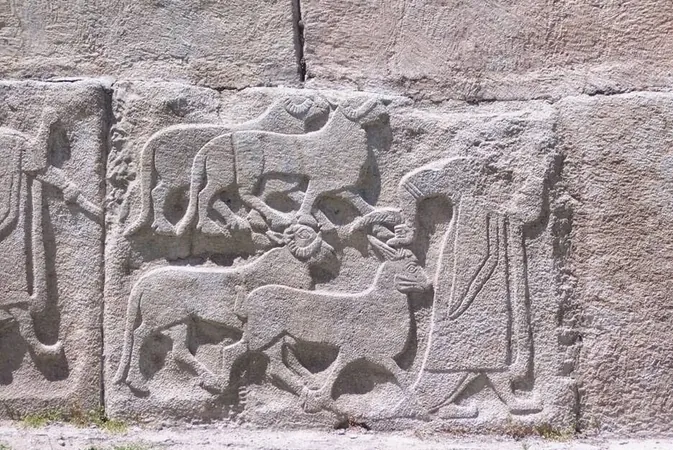
Shocking Discovery: Türkiye's Role as the Birthplace of Domesticated Sheep Uncovered!
2024-11-19
Author: Rajesh
The Wild Roots: Türkiye's Connection to Domesticated Sheep
In a groundbreaking study set to change the way we view sheep domestication, an international team of scientists, spearheaded by researchers from Hacettepe University and Middle East Technical University, have traced ancient sheep domestication back to Türkiye. The research, published in the prestigious Molecular Biology and Evolution journal on October 22, sheds new light on the origins of domesticated sheep, revealing Türkiye as a pivotal center for their domestication.
Unveiling Dual Lineages and Migration Patterns
The study involved a comprehensive analysis of ancient genomes obtained from sheep in Türkiye, Iran, Russia, Sweden, France, and Spain. Among the most significant findings was the identification of a 13,000-year-old wild sheep from Pinarbasi, Karaman, which has been revealed as the closest ancestor to all modern domesticated sheep breeds.
Europe's First Sheep: The Anatolian Connection
Lead author Fusun Ozer, an evolutionary geneticist at Hacettepe University, emphasized the implications of the findings, stating, "This observation bolsters the hypothesis that domesticated sheep originated from wild species in Türkiye, aligning perfectly with archaeological evidence."
A Dynamic Era of Change for Sheep and Human Societies
The study also uncovered intriguing insights regarding sheep populations. Researchers found that both Anatolian and Cypriot mouflons share a closer genetic relationship with domesticated sheep than the Iranian mouflon does. Ozer pointed out that the Epipaleolithic sheep from Central Anatolia serve as a more probable source for domestication than their Iranian counterparts, dispelling long-held assumptions.
The Enduring Legacy of Domestication and Genetic Diversity Shifts
Furthermore, the research uncovers that sheep traveled from Anatolia to Cyprus around 8,000 B.C., illustrating the extensive movement of these animals across regions. This movement highlights how Neolithic sheep diversity exhibited dual structures, with post-Neolithic migrations contributing significantly to the genetic pool of sheep in different areas of Europe.




 Brasil (PT)
Brasil (PT)
 Canada (EN)
Canada (EN)
 Chile (ES)
Chile (ES)
 España (ES)
España (ES)
 France (FR)
France (FR)
 Hong Kong (EN)
Hong Kong (EN)
 Italia (IT)
Italia (IT)
 日本 (JA)
日本 (JA)
 Magyarország (HU)
Magyarország (HU)
 Norge (NO)
Norge (NO)
 Polska (PL)
Polska (PL)
 Schweiz (DE)
Schweiz (DE)
 Singapore (EN)
Singapore (EN)
 Sverige (SV)
Sverige (SV)
 Suomi (FI)
Suomi (FI)
 Türkiye (TR)
Türkiye (TR)